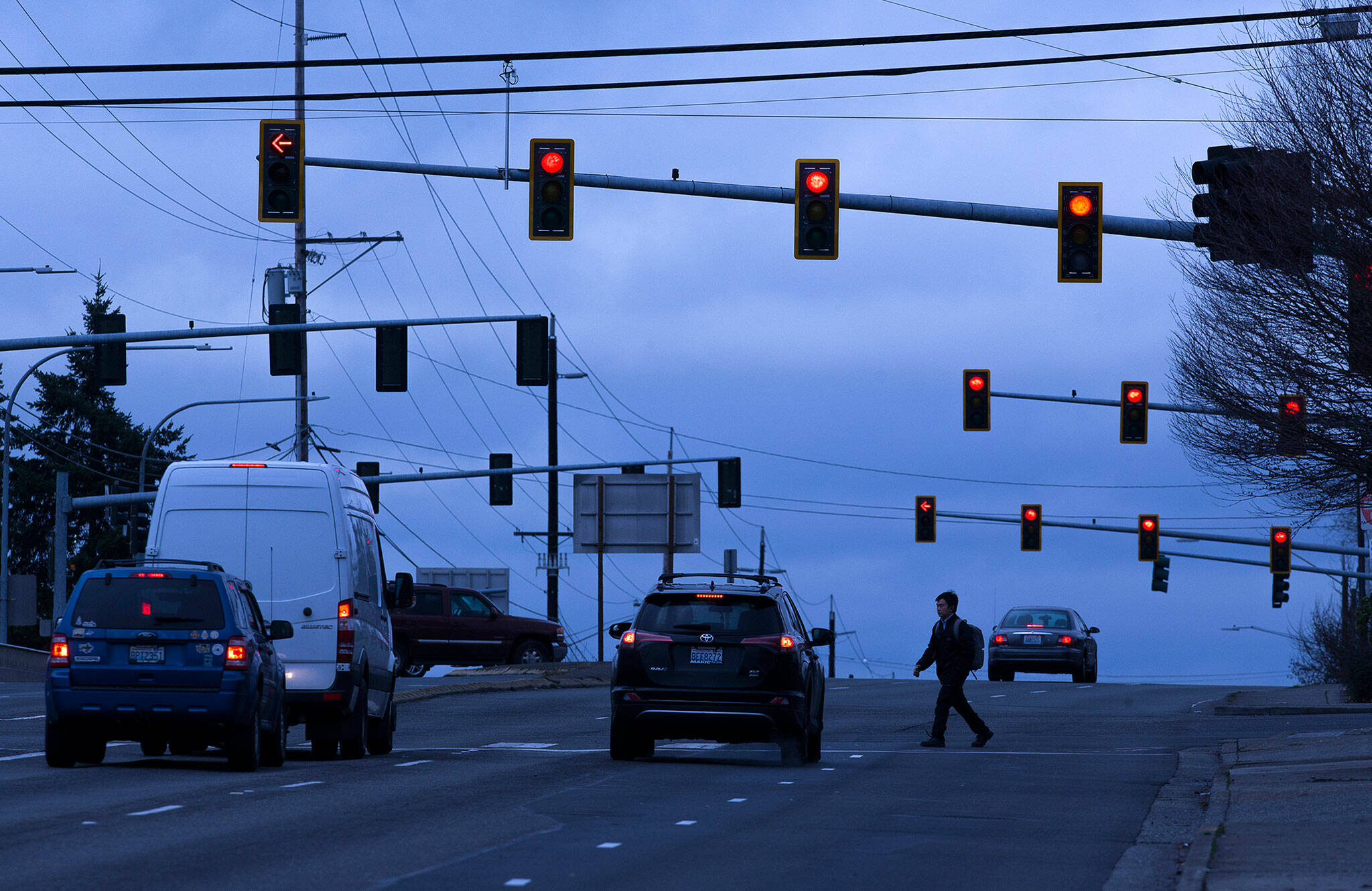By The Herald Editorial Board
In voicing her opposition to the city of Everett turning to red-light cameras at seven locations in the city, City Councilmember Liz Vogeli noted there are other options that could make those intersections — one of which is near a school — safer.
Vogeli, who recently won reelection to her District 4 seat, was in the minority last week as the council voted 5-1 to authorize city staff to issue a request for proposals from companies that could supply the cameras and related equipment by later next year, an initiative that the city has discussed for 10 years.
Vogeli is correct that there are improvements that the city can make to those problem locations — and others throughout the city — that could improve their safety and reduce the frequency of serious accidents, resulting in fewer injuries and fatalities. And the city should consider those improvements. It’s just that red-light cameras may provide the city some of the revenue it would need for that work.
For the five years between 2016 and 2020, according to the Washington State Traffic Safety Commission, there have been a total of 52 fatal collisions in Everett, increasing to 13 in 2020, after three years of eight to nine fatalities in 2017-19. Of those 52 fatal collisions in those five years, 21 occurred on city streets, compared with 19 on state highways and 11 on I-5. Of the 21 fatalities on city streets, 14 occurred at intersections.
City staff reported earlier this year that an average of 54 collisions were reported at the intersections being considered for the cameras between 2012 and 2016, with injuries reported at 25 percent of the accidents, as reported Saturday by The Herald’s Ben Watanabe.
Intersections, not surprisingly, account for 23 percent of all traffic fatalities statewide, according to the state Traffic Safety Commission in its 2019 Target Zero report.
And there’s ample evidence from past studies that while there are trade-offs, the red-light cameras — because of their deterrent effect — are an effective tool in reducing serious accidents and injuries, deaths and property losses.
While traffic cameras are effective in limiting the number of right-angle — or “T-bone” — accidents, some studies have shown an increase in rear-end accidents, with drivers stopping quickly and being hit by vehicles following too closely. But even accounting for the increase in rear-end wrecks, the statistics show an overall decrease in injuries and in property losses.
A 2005 Federal Highway Administration study found that, even with an increase in rear-end accidents, each intersection where cameras were used showed an average decrease in property losses of between $40,000 and $50,000 annually, because of the decline in more serious right-angle crashes.
The Centers for Disease Control and Prevention cites studies that similarly showed decreases in rates of fatal accidents. A 2011 study looked at fatal crashes in 14 U.S. cities with red-light cameras and 48 cities without. In cities without the cameras, fatal accidents decreased 14 percent for the years studied; but in cities where the cameras were used, fatal accidents decreased even more, by 35 percent.
As Vogeli noted, there are other effective solutions, many recommended by the Traffic Safety Commission in its 2019 report, including converting intersections to roundabouts, “protected” left-turn lanes, modified signal timing for pedestrians, restricting “free” left-turns on red lights, improving sight distance visibility and more. The report also recommends the red-light and speed cameras.
Those intersections where the cameras will be placed should be first on the city’s list to see some of those enhancements.
Use of the red-light cameras will offer a dedicated if modest source of revenue for those improvements; in fact it’s the only allowed use after paying vendors and for system administration. With fines at $124, city staff have estimated that the cameras would bring in about $1.4 million a year. Much of that would go toward the camera vendor and hiring city employees to administer the program and its fines. Yet, in 2018, Lynnwood’s 16 red-light cameras grossed $3.4 million and netted revenue of $2.8 million.
As well, there was concern expressed at last week’s council meeting for the lower-income residents of neighborhoods where most of the cameras will be installed, mainly south of 41st Street. Granted, a $124 fine would be a hardship for some. But the red-light camera fines are less of a burden than traffic citations issued by police; they don’t count against a driver’s record and are not reported to insurance companies. And that $124 is effective as a deterrent. Other cities with red-light cameras, including New York and Chicago, reported a drop in fines issued as drivers became accustomed to the cameras.
And for residents and commuters who travel the intersections that would get the cameras — motorists, cyclists and pedestrians, alike — the $124 fine doesn’t compare to the hardships of expensive vehicle repairs, hospital bills and loss of life that now happen too frequently at these intersections.
Talk to us
> Give us your news tips.
> Send us a letter to the editor.
> More Herald contact information.

























